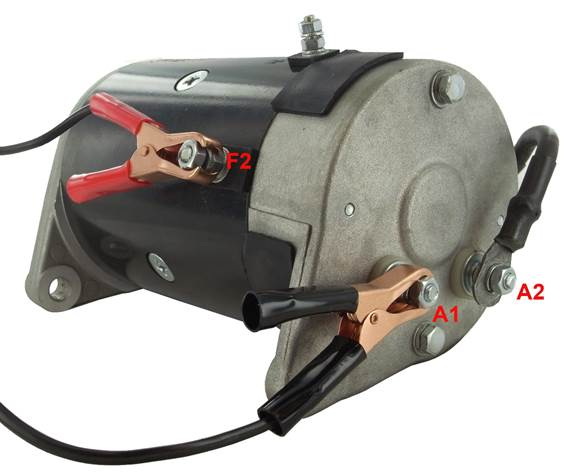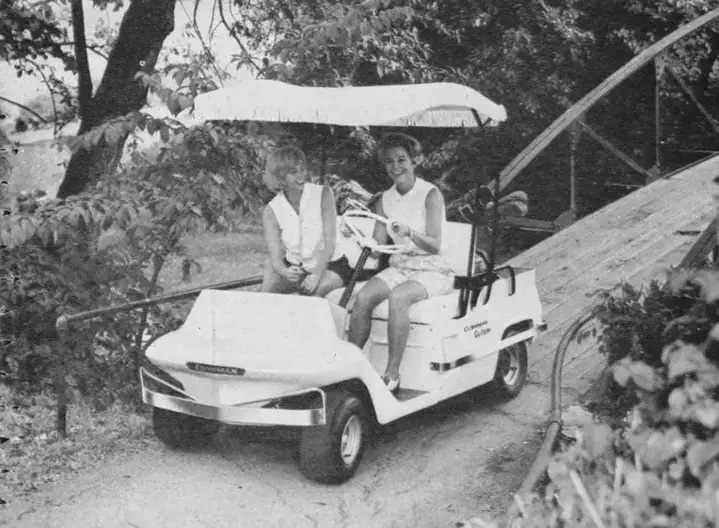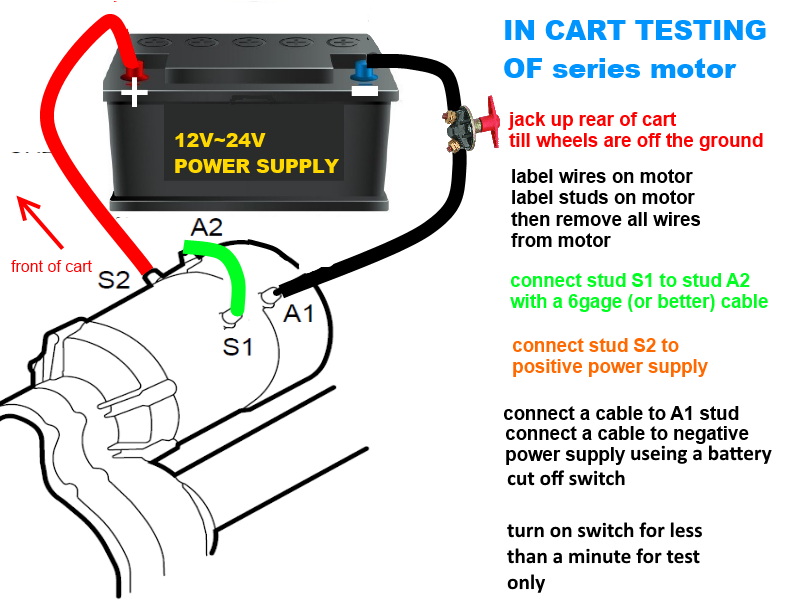Content Menu
● Understanding Electric Golf Carts
● The Role of an Alternator
● Why Consider Adding an Alternator?
● Considerations Before Installation
>> Compatibility
>> Installation Complexity
>> Power Requirements
>> Battery Type
>> Space Constraints
● Steps to Install an Alternator on an Electric Golf Cart
>> 1. Gather Necessary Tools and Materials
>> 2. Disconnect the Battery
>> 3. Mount the Alternator
>> 4. Connect the Wiring
>> 5. Reconnect the Battery
>> 6. Test the System
● Potential Challenges
>> Electrical Overload
>> Maintenance
>> Cost
>> Warranty Considerations
● Conclusion
● Frequently Asked Questions
>> 1. Can I use any alternator for my electric golf cart?
>> 2. Will adding an alternator void my golf cart's warranty?
>> 3. How do I know if my golf cart needs an alternator?
>> 4. What type of batteries work best with an alternator?
>> 5. How often should I maintain the alternator?
Understanding Electric Golf Carts
Electric golf carts have become increasingly popular for their efficiency, eco-friendliness, and ease of use. These vehicles are primarily powered by batteries, typically lead-acid or lithium-ion, which supply energy to an electric motor. Unlike traditional gas-powered carts, electric models do not have an internal combustion engine, which means they do not require an alternator to charge a battery while the engine runs. Instead, the batteries are charged through an external charger when the cart is not in use.
Electric golf carts are designed for various applications beyond just golfing. They are often used in residential communities, resorts, and even for short-distance transportation in urban areas. Their quiet operation and low environmental impact make them an attractive option for many users. However, as with any vehicle, owners often seek ways to enhance performance and functionality, leading to questions about modifications such as adding an alternator.

The Role of an Alternator
An alternator is a device that converts mechanical energy into electrical energy, primarily used in vehicles with internal combustion engines. It generates electricity to power the vehicle's electrical systems and recharge the battery while the engine is running. In the context of electric golf carts, the role of an alternator is not standard, but some modifications can allow for its integration.
The primary function of an alternator is to maintain the battery's charge while the vehicle is in operation. This is particularly useful in vehicles that have high electrical demands, such as those equipped with lights, sound systems, or other accessories. For electric golf carts, the addition of an alternator can help ensure that the batteries remain charged during extended use, especially when additional electrical components are added.
Why Consider Adding an Alternator?
There are several reasons why a golf cart owner might consider adding an alternator:
1. Improved Battery Charging: An alternator can provide a continuous charge to the batteries while the cart is in use, potentially extending battery life and reducing the frequency of charging sessions. This is especially beneficial for users who frequently use their carts for long periods.
2. Powering Additional Accessories: If you plan to add electrical accessories such as lights, sound systems, or GPS devices, an alternator can help ensure that your batteries have enough power to support these additions without draining them too quickly. This can enhance the overall experience of using the golf cart, making it more versatile for various activities.
3. Enhanced Performance: For those who use their golf carts for more than just golfing—such as off-road adventures or as utility vehicles—an alternator can help maintain power levels during extended use. This can be particularly important for users who rely on their carts for work or recreational activities that require additional power.
4. Increased Reliability: With an alternator, the risk of running out of battery power during use is reduced. This can provide peace of mind for users who may be far from a charging station or who use their carts in remote areas.
5. Cost-Effectiveness: While there is an initial investment in adding an alternator, the long-term benefits of reduced battery replacement costs and less frequent charging can make it a cost-effective solution for many golf cart owners.
Considerations Before Installation
Before deciding to install an alternator on your electric golf cart, there are several important factors to consider:
Compatibility
Not all electric golf carts are designed to accommodate an alternator. It is crucial to ensure that the alternator you choose is compatible with your specific cart model. Research the specifications of both the cart and the alternator to determine if they can work together effectively. Some golf carts may have specific electrical configurations that could complicate the installation of an alternator.
Installation Complexity
Installing an alternator on an electric golf cart is not a straightforward task. It may require modifications to the cart's electrical system, including wiring changes and possibly the addition of a mounting bracket. If you are not experienced with electrical systems, it may be wise to consult with a professional or seek assistance from someone who has experience with such modifications. Proper installation is crucial to ensure the safety and functionality of the cart.
Power Requirements
Consider the power requirements of your golf cart and any additional accessories you plan to use. An alternator generates a specific amount of power, and it is essential to ensure that it can meet your needs without overloading the system. Understanding the total wattage of all electrical components will help you choose an alternator that can handle the load.
Battery Type
The type of batteries in your golf cart can also influence the decision to install an alternator. Lead-acid batteries have different charging requirements compared to lithium-ion batteries. Ensure that the alternator you choose is suitable for the type of batteries you have. Additionally, consider the charging voltage and current to avoid damaging the batteries.
Space Constraints
Electric golf carts have limited space, and finding a suitable location to mount an alternator can be challenging. Ensure that there is enough room for the alternator and that it will not interfere with other components of the cart. Proper airflow is also essential to prevent overheating.

Steps to Install an Alternator on an Electric Golf Cart
If you decide to proceed with the installation of an alternator, here are the general steps you might follow:
1. Gather Necessary Tools and Materials
Before starting the installation, gather all the necessary tools and materials. This may include:
- An alternator
- Mounting brackets
- Wiring harness
- Battery terminals
- Tools such as wrenches, screwdrivers, and pliers
2. Disconnect the Battery
Safety is paramount when working with electrical systems. Begin by disconnecting the battery to prevent any accidental short circuits or shocks during the installation process. Always wear safety gear, such as gloves and goggles, to protect yourself.
3. Mount the Alternator
Find a suitable location to mount the alternator on your golf cart. This may require creating a custom mounting bracket to secure the alternator in place. Ensure that it is positioned in a way that allows for proper airflow and does not interfere with other components of the cart. The alternator should be easily accessible for maintenance and adjustments.
4. Connect the Wiring
Carefully connect the wiring from the alternator to the golf cart's electrical system. This may involve connecting the alternator's output to the battery and ensuring that the wiring is secure and insulated to prevent any shorts. Use high-quality connectors and ensure that all connections are tight to avoid any electrical issues.
5. Reconnect the Battery
Once the alternator is securely mounted and the wiring is connected, reconnect the battery. Double-check all connections to ensure they are tight and secure. It is advisable to use a multimeter to check the voltage levels before proceeding.
6. Test the System
Before taking your golf cart out for a spin, test the system to ensure that the alternator is functioning correctly. Start the cart and check for any unusual sounds or issues. Monitor the battery voltage to ensure that it is charging properly. If everything is functioning as expected, you can take your cart for a test drive.

Potential Challenges
While adding an alternator to an electric golf cart can provide benefits, there are also potential challenges to be aware of:
Electrical Overload
If the alternator generates more power than the cart's electrical system can handle, it may lead to overheating or damage to components. It is essential to ensure that the alternator's output is compatible with the cart's electrical system. Consider installing fuses or circuit breakers to protect against overloads.
Maintenance
An alternator requires maintenance, just like any other mechanical component. Regular checks for wear and tear, as well as ensuring that the wiring remains intact, are necessary to keep the system functioning optimally. Schedule periodic inspections to identify any potential issues before they become serious problems.
Cost
The cost of purchasing and installing an alternator can add up. Consider whether the benefits of adding an alternator outweigh the expenses involved. It may be helpful to compare the costs of battery replacements and charging expenses to determine the long-term savings.
Warranty Considerations
Modifying your golf cart by adding an alternator may void any existing warranties. Before proceeding with the installation, check with the manufacturer or dealer to understand the implications of such modifications. This is particularly important if your cart is still under warranty.
Conclusion
In conclusion, while it is possible to install an alternator on an electric golf cart, it requires careful consideration and planning. The benefits of improved battery charging and the ability to power additional accessories can be significant, but the installation process can be complex and may require modifications to the cart's electrical system.
Before proceeding, ensure that you have a clear understanding of your golf cart's specifications, the alternator's compatibility, and the potential challenges involved. If you are not confident in your ability to perform the installation, seeking professional assistance is advisable.
By taking the time to research and plan, you can successfully enhance your electric golf cart's performance and enjoy the benefits of added power and functionality.

Frequently Asked Questions
1. Can I use any alternator for my electric golf cart?
Not all alternators are compatible with electric golf carts. It is essential to choose an alternator that matches the specifications of your cart and its electrical system.
2. Will adding an alternator void my golf cart's warranty?
Modifying your golf cart by adding an alternator may void any existing warranties. It is advisable to check with the manufacturer or dealer before making any modifications.
3. How do I know if my golf cart needs an alternator?
If you frequently use additional electrical accessories or experience battery drain during extended use, adding an alternator may be beneficial. Monitoring battery performance can help determine if an alternator is necessary.
4. What type of batteries work best with an alternator?
Lead-acid and lithium-ion batteries can both work with an alternator, but it is crucial to ensure that the alternator's output is compatible with the specific battery type you are using.
5. How often should I maintain the alternator?
Regular maintenance is essential for the longevity of the alternator. It is advisable to check the alternator and its connections periodically, especially before and after heavy use, to ensure everything is functioning correctly.











































